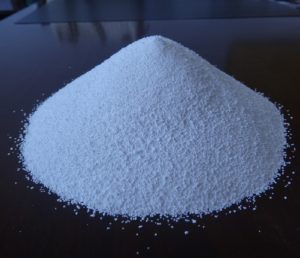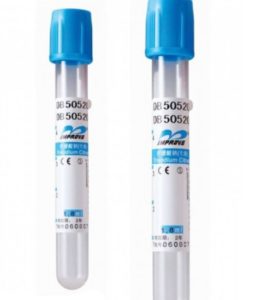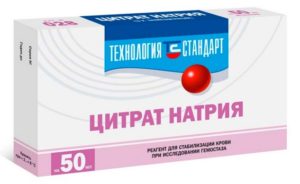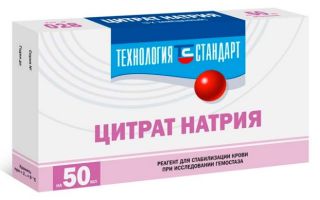Content
The term "food additives" or "preservatives" with the "E" label cause fear among consumers, consistently associated with harm to health. Sodium citrate, known as the food additive E331, also belongs to them, which some consider dangerous, others do not.
The benefits and harms of sodium citrate are due to a number of valuable properties and unique characteristics.
Is sodium citrate harmful (preservative E331)
Sodium citrate is the sodium salt of citric acid used as an antioxidant, preservative and flavor enhancer.
At the same time, it is not classified as an agent causing allergic reactions, or as a substance that is toxic and dangerous to the body.
The harmlessness of sodium citrate is well demonstrated by the fact that it is included in baby food, as well as the fact that the daily intake of it in food has not been established. While its use in the composition of medicines is strictly regulated by the instructions accompanying them.
E331 is included in the list of additives that are approved for use by the food industry in Russia.
Characteristics and features of sodium citrate

E331 is produced from citric acid (E330) by neutralizing it with sodium hydroxide, its chemical formula: Na3C6H5O7.
Sodium citrate at room temperature appears as an odorless, white solid that has a salty, slightly sour taste. Because of this feature, it is also called "sour salt". This crystalline powder is highly soluble in water and slightly soluble in alcohol, does not possess explosive, toxic properties, is considered hypoallergenic for the body, due to which it is actively used for medical purposes, however, if inhaled, it can irritate the mucous membrane.
The sodium citrate molecule can contain different amounts of sodium ions, and depending on this, there are three types of it:
- 1-substituted (monosodium citrate);
- 2-substituted (disodium citrate);
- 3-substituted (trisodium citrate).
Is sodium citrate good for you?
The most popular of the sodium citrate group, the 2-substituent, or dihydrate, is a powerful antioxidant that can fight free radicals in the blood.
It demonstrates useful alkalizing properties, neutralizing excess acid in the blood and urine, that is, it acts as an acidity stabilizer that can prevent oxidative processes. It is well known that an increase in the internal acidic environment of the body above normal (below pH 7) provokes harm in the form of inflammatory processes. This is solved with the help of the so-called alkalization of the body. A useful additive E331 can act as a regulator of the acid-base balance.
In the form of drugs, it is prescribed for diagnoses of heartburn, cystitis, inflammation of the kidneys, and it also neutralizes the effects of the hangover syndrome.
Sodium citrate harm and side effects

Synthesized from citric acid, sodium citrate, when consumed in moderate doses, is considered a compound with no apparent hazardous health effects.
Excessive use of the supplement (mainly as a medicine) can cause harm: then metabolic processes are disturbed in the body, manifested by edema of the mucous membranes of the respiratory system, diarrhea, headaches, up to neuralgic disorders.
In the composition of food, sodium citrate is contained in insignificant doses, and there is no evidence of harm to health when eating foods with it.
Where is sodium citrate used
For a long time, the benefits of sodium citrate were used only for medical purposes as an anticoagulant in blood transfusions, before its stabilizing and emulsifying properties were discovered, which became widely used in industrial food production technologies.
E331 is also usefully used for artificial insemination in animal husbandry, in analytical chemistry, with its help they regulate the acidity level in coffee machines.
In the food industry
Industrial food production uses the beneficial properties of sodium citrate for the following purposes:
- regulation of acidity;
- enhancing taste;
- melting cheese;
- improving the organoleptic properties of products;
- emulsification.
At the same time, all three of its types are involved in technological processes.
1-water sodium citrate, obtained by removing sodium and crystallization, has a peculiar sour-salty taste, which is used to improve the organoleptic properties of food and in the regulation of increased acidity in dishes.
2-water sodium citrate, as the most concentrated in terms of content, has useful properties to increase the shelf life of products, accelerate the whipping of ice cream or creams, and salting meat.
As an antioxidant, sodium citrate has the property of preserving the color of foods and also inhibiting the appearance of bitterness in them.
The benefits of sodium citrate when combined with citric acid important to provide accurate pH control required in many foods and beverages.
A 3-substituted citrate, citric acid, is useful in the production of carbonated drinks to enhance the flavor of citrus.
In milk production, this type of sodium citrate is added as a preservative to obtain pasteurized milk that can withstand prolonged heat treatment and retain its beneficial properties.
An important benefit of sodium citrate is its low price, which helps the commercial benefit of food manufacturers.
In medicine

In the medical field, the benefits of E311 seem endless. It is used as:
- an antioxidant capable of eliminating free radicals;
- an anticoagulant in the blood, which reduces the tendency to form blood clots, which is beneficial for people of all ages;
- Diuretic: Salt has diuretic properties.
- anti-urolytic: to dissolve cystine stones as a result of urine alkalinization and pH normalization.
Sodium citrate as a drug has benefits for the body as a biologically active component.
Sodium citrate in the form of injections is administered during donor activities to increase the body's positive response to transplants.
E331 has the ability to enhance the effect of ascorbic acid and also have a pronounced laxative effect.
Acidic salt is also used to increase the shelf life of protein preparations. She is also able to hide the unpleasant taste of drugs.
The peculiarity of the compound formula is used in the production of instant drugs, for example, for hangovers.
In cosmetics
Sodium citrate is successfully used in the cosmetic industry due to its beneficial properties:
- regulation of acid-base balance with cosmetic preparations;
- neutralizing the harm of alkaline effects of detergents on the skin and hair;
- removal of white alkaline plaque from hair;
- conditioning, softening, smoothing of the skin and hair;
- increased shine and smoothness of hair;
- straightening the cuticle;
- stimulation of foaming, giving stability to the foam;
- preserving, thickening and emulsifying qualities.
In sports
E311 is sold in the form of a sports nutrition to improve the quality of the body's activity during training.
In particular, 3-valent sodium citrate in sports helps
- optimize the body's redox reactions;
- increase muscle gain;
- in the general endurance of the body.
An example is its use in sports nutrition for bodybuilders.
In addition, the E331 supplement is a useful catalyst for the conversion of carbohydrates and amino acids, due to which it has the ability to increase the body's energy supply.
Sodium citrate demonstrates excellent benefits in such cases.
- to delay fatigue;
- in anaerobic exercise, at the limit of the athlete's capabilities;
- in order to improve physical performance.
At the same time, an important aspect of the additive is the safety of its use.
Conclusion
The breadth of application of E331 leaves no doubt about the answer to the question: what are the benefits and harms of sodium citrate. As a natural ingredient, sodium citrate has beneficial effects on the body. The additive has found its application in a wide range of industries: in food production, medicine and pharmacology, cosmetology and others, while its harm can be talked about conditionally only in cases of individual intolerance or exceeding the norm of drugs with its content.

